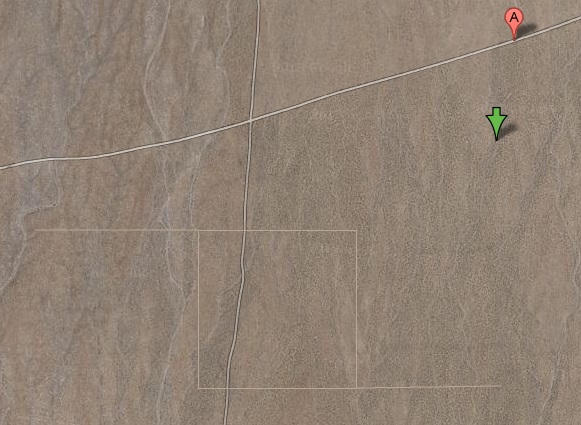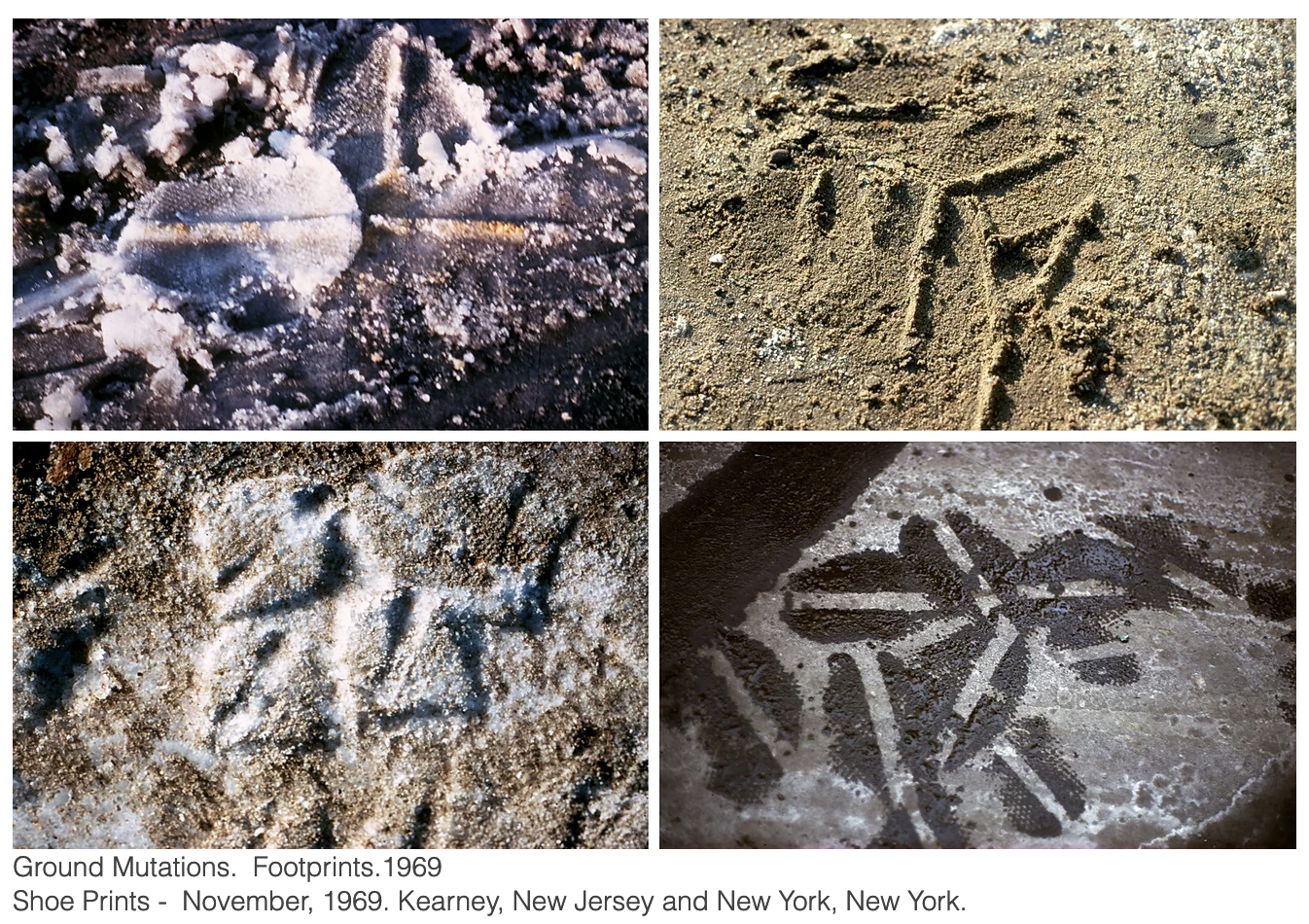Walter De Maria (1935-2013)
“A large, simple etching on the earth, made with four shallow cuts from the six foot blade of bulldozer, two one mile long, two a half mile long, forming a square with half mile lines extending from it. Made in 1969 by the artist Walter de Maria, in a remote location north of Las Vegas, the piece was not maintained, and is only faintly visible today, to some.” [credit]
—
“The question is not whether you can visit Walter De Maria’s Leaving Las Vegas; the question is, does it still exist?
Already in 1972 when discussing the land art project with Paul Cummings, Walter de Maria seemed to emphasize the difficulty of actually experiencing Las Vegas Piece as part of the actual experience of Las Vegas Piece. He’d graded a mile-long square onto a barren desert valley north of the city, and you’d have little chance of even finding it, much less seeing it, much less seeing it all:
it takes you about 2 or 3 hours to drive out to the valley and there is nothing in this valley except a cattle corral somewhere in the back of the valley. Then it takes you 20 minutes to walk off the road to get to the sculpture, so some people have missed it, have lost it. Then, when you hit this sculpture which is a mile long line cut with a bulldozer, at that point you have a choice of walking either east or west. If you walk east you hit a dead end; if you walk west you hit another road, at another point, you hit another line and you actually have a choice.
And on and on for several hours, until your choices and backtracking end in some combination of experiencing the entire sculpture on the ground; declaring victory or defeat partway through; and dying of exposure in the desert because you can’t find your car.” [credit]











